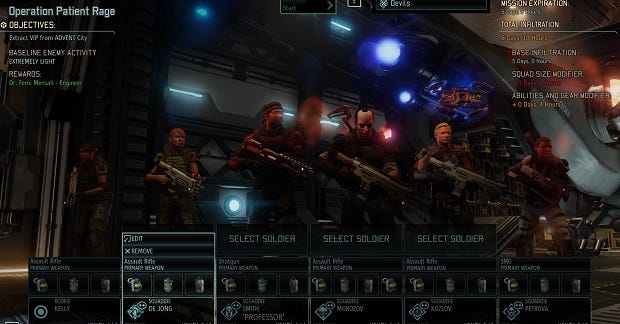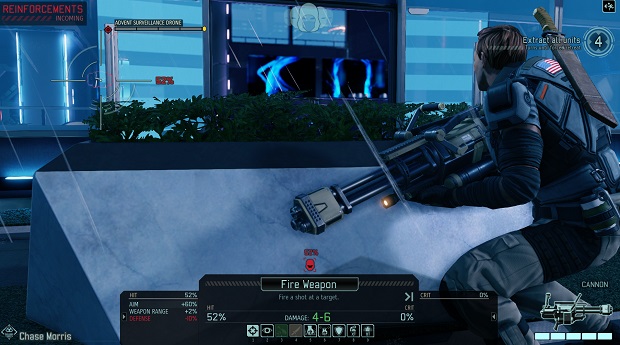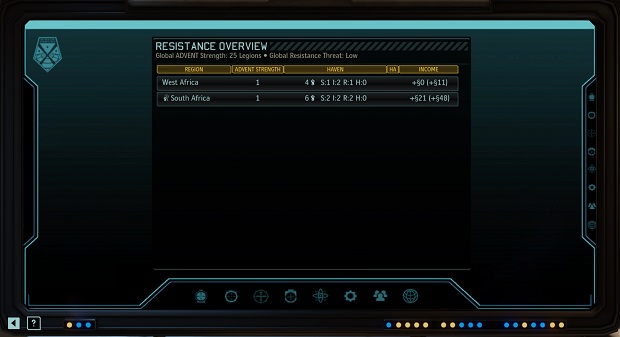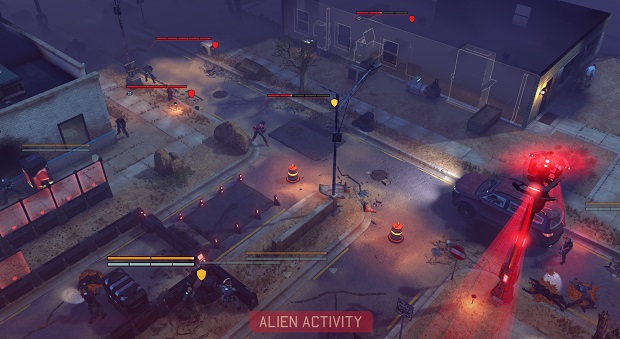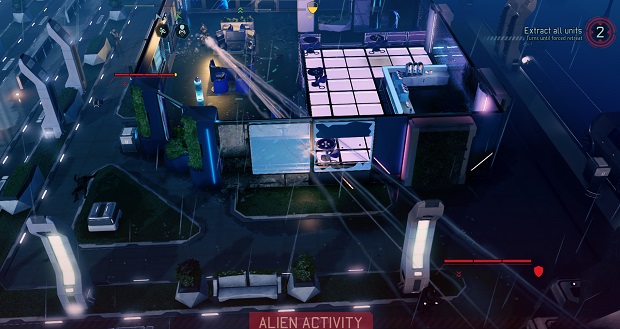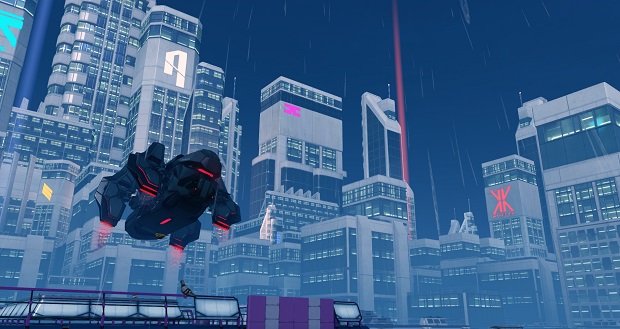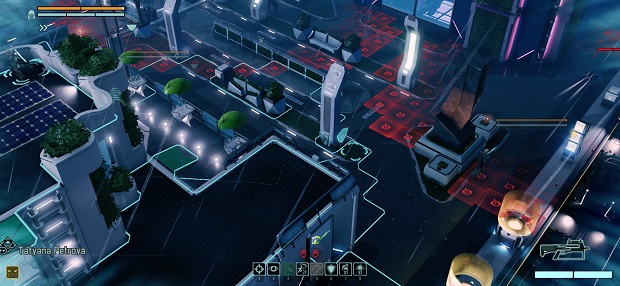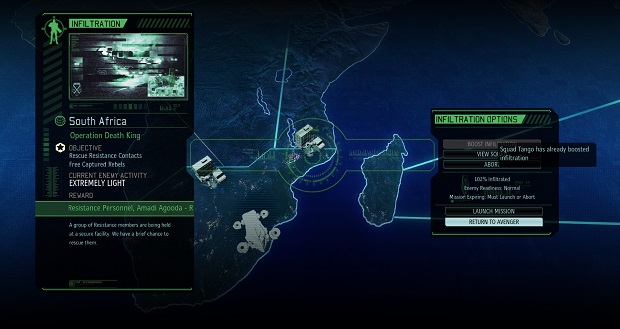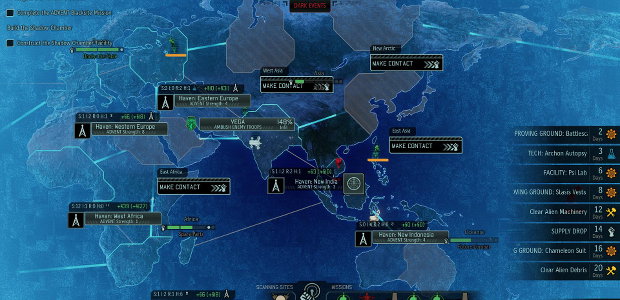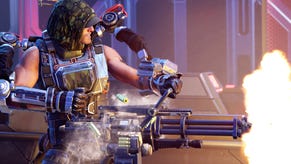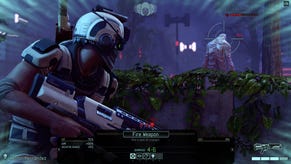XCOM 2's Long War excels through new tactical depths
Harder, better, slower, stronger
From the very first mission of The Long War 2, the stakes are different. Your enlarged squad isn't doing anything as brash as blowing up an Advent statue; instead, they've managed to track down an under-strength patrol and are determined to take it down. Two things are immediately clear: the insurgency aren't as bold as at the beginning of vanilla XCOM 2, but, as individuals and as squads, they're far more cunning.
Mission one: eight soldiers, all with protective vests, frags and flashbangs. Tougher recruits for a tougher war. The fight for Earth isn't just longer, it's broader and more involved at every level. The Long War is available now and we've been in the thick of the right for the past few days.
As I played The Long War 2, one question never left my mind: no matter how much longer and harder this might be, is it also more interesting and enjoyable? Bigger isn't necessarily better. I'm currently playing Darkest Dungeon again, a game that is receiving a shorter mode in a coming update, and even though it's comfortably one of my favourite games of recent times, I'll be glad of a condensed mode. After a while, every dungeon starts to look a lot like the last one.
Stretch an XCOM 2 campaign out for an extra thirty, forty or fifty hours (I haven't completed a Long War 2 campaign yet but I imagine length will vary quite a lot depending on chance and your own efficiency) and all of those extractions, retaliations and data hacks might become extremely repetitive. The pacing of the vanilla game is very deliberate, dropping new enemies and technologies in your path at a steady rate and ensuring that though you have a level of control over events, there's always a guiding hand to lead you from one narrative beat to the next.
The Long War 2 doesn't discard or sidestep those narrative beats, apart from the first (the Commander figure that you play no longer has that grand introduction), but it fills the spaces in between the major steps forward with much more of the tactical pleasures and emergent narratives that are the series' key strength. Every time I've sent a squad into combat, I've been tense and excited all over again, which is incredible considering the tens of hours I've already poured into XCOM 2. For reasons that I'll go into shortly, the tactical side of the game is not just the best it's ever been, it's so much improved that I'll find it hard to back to vanilla. The improvements to the strategic side, which is where I thought The Long War 2 might make the most dramatic changes, don't all feel as meaningful.
That's partly simply because more time is spent in combat than on the Geoscape or in the Avenger base. It might have a strategic five o'clock shadow, but XCOM 2 is a game primarily about tactical combat. That hasn't changed here, and I didn't expect a mod to rewrite the game's structure entirely, but what has been added does enhance the sense of fighting a war rather than progressing through a series of missions.
Most meaningful among the changes is the ability to field several squads simultaneously. It's a change that makes itself known throughout the entire game. Primarily, it's a way to deal with several threats or opportunities at the same time, tearing up the binary approach that XCOM 2 originally took. If Advent are attacking civilians in West Africa and New Australia, you can send one squad to each location rather than choosing who should live and who should die.
Complications arise in that you don't get a fleet of Skyrangers to zip your people around the map and you'll need to take the Avenger to each location, dropping off the squad and then moving on to your next stop. That makes the actual base feel much more like a mobile thing that exists on a map rather than a cursor that you move to a place simply to activate the mission in that place.
When you drop a squad at a mission location, in most cases they no longer jump straight into combat. There's an infiltration period, which is a smart thematic fit and one of The Long War's biggest game-changing additions. The infiltration period is the time it takes for your soldiers to locate their target, while remaining hidden among the general population or out in the sticks. They're doing all the cool secret agent stuff and preparing for the final objective and the escape that follows.
All of those timed missions feel much more fitting now that they're explicitly the final moments of a week-long effort, involving subterfuge, espionage and commando take-downs. That you don't get to see any of the former is understandable, and I would have liked some flavour text or occasional choices to make along the way, but when you have two squads out in the world, infiltrating Advent cities, there's a splendid sense of urgency.
Infiltration isn't just window-dressing though. Missions have an expiry date and when you arrive at the location, every change you make to your squad, from adding new members to changing their equipment, affects the time you'll need to complete infiltration. If you can hit 100% before the expiry date, which forces you to either launch the mission or abort, then you'll face weaker Advent forces. Anything less than 100% and they'll be reinforced. You can spend Intel to boost the rate of infiltration but it mostly depends on the makeup of your squad.
Remember how the first mission gives you eight soldiers? You can send ten on the next if you reckon that's the best way to get the job done. My favourite thing about The Long War 2 is that it makes me think about squad-building far more seriously than XCOM ever has before. Do I want to risk sending a rookie, in the hopes she'll get those first kills and start her climb through the ranks? Should I risk all of my best soldiers on a single target or split them between all of my active squads? Would it be smart to send a Shinobi-only squad, just three, to attempt the kind of fast, sneaky surgical strike that a larger mob couldn't manage?
Every soldier you add to a squad increases infiltration time, though some have abilities that lessen the impact. Giving them certain equipment also modifies the timing – suppressors are an early assist – so you'll need to balance taking the best possible squad and ensuring you face the weakest enemy forces.
The multi-squad management and infiltration are the most significant changes to the Geoscape, or at least the most visible ones. You can also give basic instructions to civilians in the areas you've contacted and have some control over, using a simple menu that allocates them to gather intel, supplies or new recruits. It's a little like a simplified version of the system in Jagged Alliance 2, right down to those folks appearing in missions that take place in the area. While the personnel management does allow for some level of control it really comes down to boosting the flow of resources when needed. There's usually a correct way to adjust the settings, depending on your expenditure or discoveries that month, so it felt like one more plate to spin rather than the meaningful choices everywhere else in the mod.
And, thankfully, meaningful choices are Long War's bread and butter. All of those decisions made during the infiltration phase pay off when you take control. All soldiers now have three slots for utility items but leaving one or all empty makes them more mobile. Immediately there is more to consider when building a squad and between turns in every mission. Flashbangs, frags and specialist equipment come into play far more often, not just through optional equipment but in the expanded skillset of every class (as well as the addition of a new class, Technical, which is halfway toward being a MEC trooper, with flames and rockets built into a single back-up weapon).
Each of the nine classes has a secondary weapon that is available at all times. If you're wondering how we got to nine classes, there's the brand new Technical class plus the three introduced in a previous mod from the Long War team. All of their mods are included in The Long War 2. The back-up weapons range from sawed-off shotguns for Rangers, which are devastating at close quarters but only have one shot per barrel, and a stun abililty for Assault troops. They all provide more options, informing how you engage with the enemy, how you improvise when things go wrong (more than ever, things will go wrong) and how you snatch victory from the jaws, claws and splash damage of defeat.
All of that along with new mission types and maps that, unless I've just been lucky with layouts, immediately feel larger and more varied completely refresh the tactical game. The opening mission ended with a shootout that levelled an entire church on my first attempt, and a sneaky, slick and effective suburban assault on the next. We didn't take a scratch. My first attempt to break a group of civilians out of Advent cells in a city centre left me with a post-mission debrief that spoke of victory – every civilian saved! - and disaster – three soldiers left behind and captured. New Advent retaliation missions sometimes require evacuation rather than the simpler rescue missions seen previously, and there are chains of missions that have a lasting impact on the world map. Those, I will not spoil.
Everything is tied together by a more active Advent AI. On the Geoscape, Advent forces move to reinforce vulnerable areas in response to your actions, which adds another wrinkle to strategic decision-making. Sometimes attacking a weak spot isn't worthwhile, particularly later in the game, because it might lead to heightened security in that region. On the flipside, Advent can be distracted, moving their pieces around the board to counter your actions and leaving themselves vulnerable where a blow against the Avatar Project can be effective in the long-term.
Stopping that project is still the goal and even in this extended campaign, the clock is ticking. The existence of new short-term targets keeps things interesting even when you don't have end-game solutions in sight, and keeping XCOM running efficiently takes more time and energy than previously. The Long War matches its length with density, of choice and of action, and the increased difficulty challenges your skill and knowledge rather than your endurance.
The mod makes XCOM 2 feel new again. Tougher and smarter on every front. Even if the civilian management isn't as interesting as I'd hoped, the greater tactical and strategic depth makes itself known immediately, and everything has been implemented intelligently within XCOM 2's narrative and framework. New missions and tactical abilities fit with the resistance setting, and the ability to send in the kind of superheroic warriors that are typical of Firaxis' take on the series while also occasionally relying on a mass of rookies makes every mission feel that little bit more unique.
A more reactive war on the Geoscape is a delight, but the soldiers are the heart of XCOM and they're better and more varied than ever. From the very first mission, you'll have rookies more capable than any you've seen before, and greater threats to counter them. By the mid-game you might have two Rangers with skillsets so different that they might as well be custom classes. In this Long War, the people are your most precious resource. Oh, and the robots too. If a new class and skills weren't enough to make your squad stand out from the crowd, you can permanently steal Advent MECs now.
The Long War 2 mod is available now, from the Steam Workshop.
